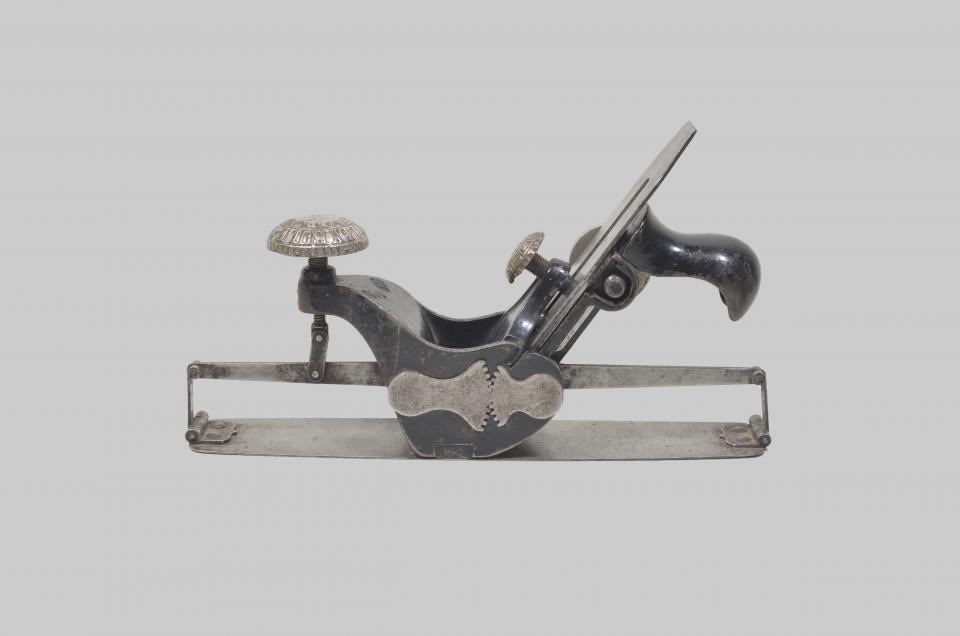
Length 26.4 cm x Width 6.9 cm x Height 14.4 cm
a - L 26.4 cm x W 6.9 cm x H 11.0 cm
b - L 18.0 cm x W 4.4 cm x H 0.8 cm
c - L 8.5 cm x W 5.6 cm x H 0.9 cm
d - L 3.0 cm x W 3.0 cm x H 3.0 cm
Metal compass / circular plane that is comprised of four parts.
a - The base of the plane is ornately shaped with moving components in the middle that can be altered with an adjustment screw on top. The top adjustment screw is circular in shape and cast on top are the words "Stanley Rule & Level Co. // Patented Sept. 25, 1877". Cast below on the body are the words "No. 113". On the side of the body, the words "Pat'd // June 17 [77]" are stamped. The bottom has a fixed mouth on a base that can be adjusted to be slightly more convex with the use of another fixed circular adjustment screw at one end of the base.
b - The iron blade of the plane that slots into its interior, and is secured by the cap iron (part c) and the removable adjustment screw (part d) and another adjustment screw in the middle of the base of the plane for depth. It is rectangular in shape, with a rectangular hole in the centre through the length of the blade. There is a circular screw through the middle that attaches a second blade. The top of the blade is stamped with "Stanley // Pat. Apl 19.92
c - The cap iron that is used to secure the blade (part b) in place. The cap iron is rectangular in shape, with a rounded point at the top. The top point has a small circular hole to attach to the plane base.
d - The adjustment screw that screws into the cap iron (part c). The screw is circular in shape, with a perpendicular screw attached to the bottom. The top of the screw is cast with an image of a gear and a horizontal line pattern.
This improved circular / compass plane was released in 1879 and this example is one of the earliest forms. Used for shaping interior curves, the unique gearing visible on the sides meant that one screw could be used to adjust the front and back.
